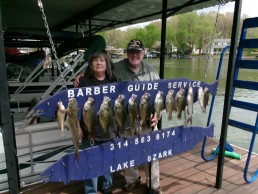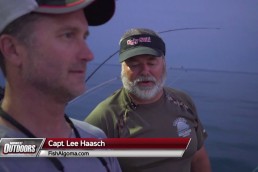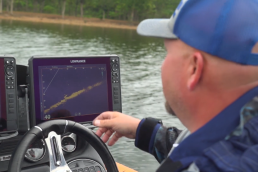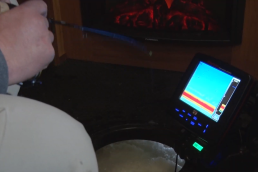An Anniversary Fishing Excursion on Lake of the Ozarks
SHARE THIS POST
My wife Kathy got a solid hit from a nice crappie. Capt. Addie Barber netted the fish, and we had the first fish of our 27th anniversary trip in the cooler. A two-day fishing trip to Lake of the Ozarks was on our bucket list when we retired.
We were fishing with Captains Chris, Addie and Rachel Barber of Barber Fishing Guide Service on the Lake of the Ozarks, near Rocky Mount, Missouri. A weather front had hit the area on Wednesday night before we fished, and we fished on Thursday and Friday. The fishing was slow, but we caught a variety of fish.
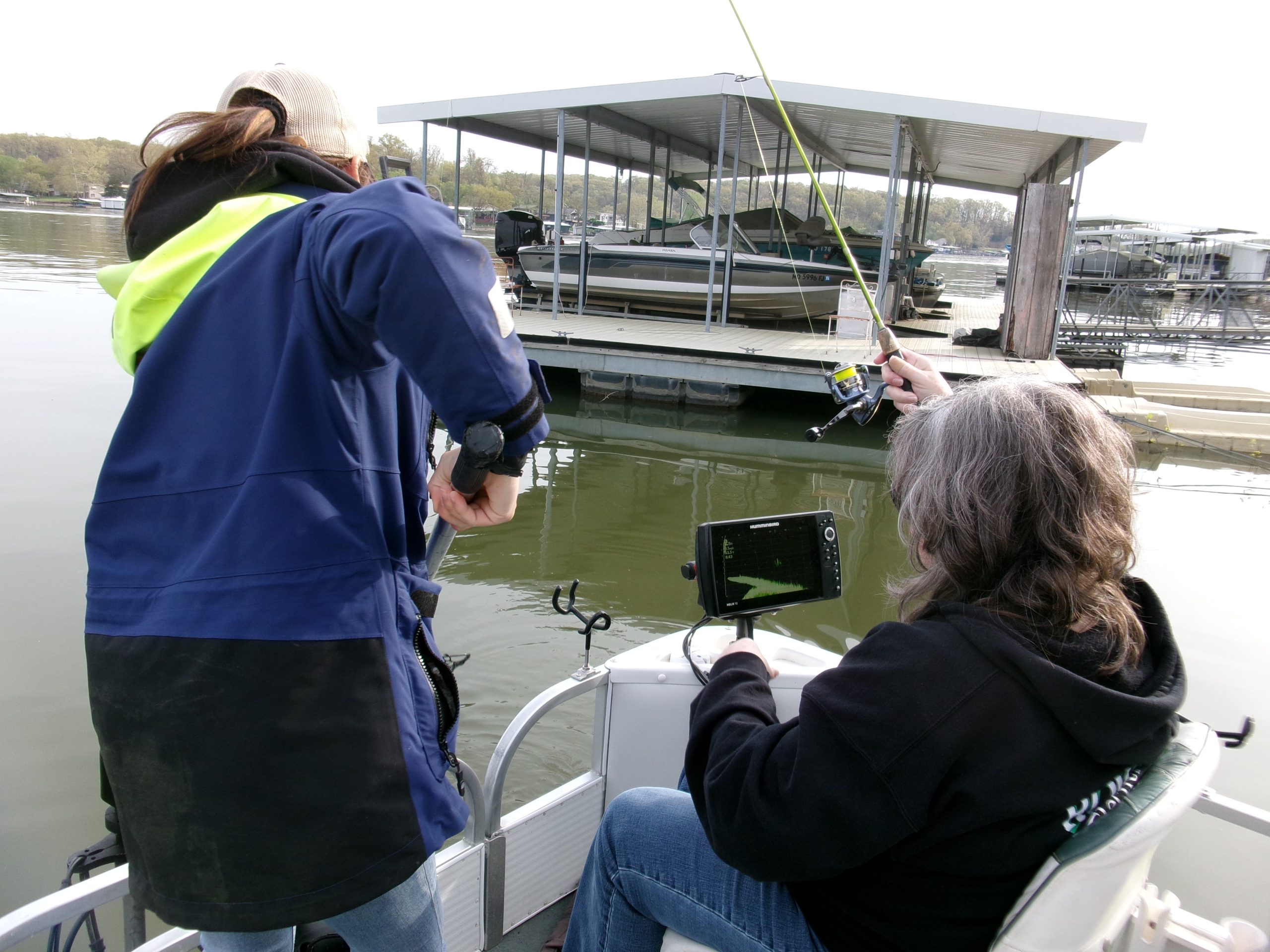
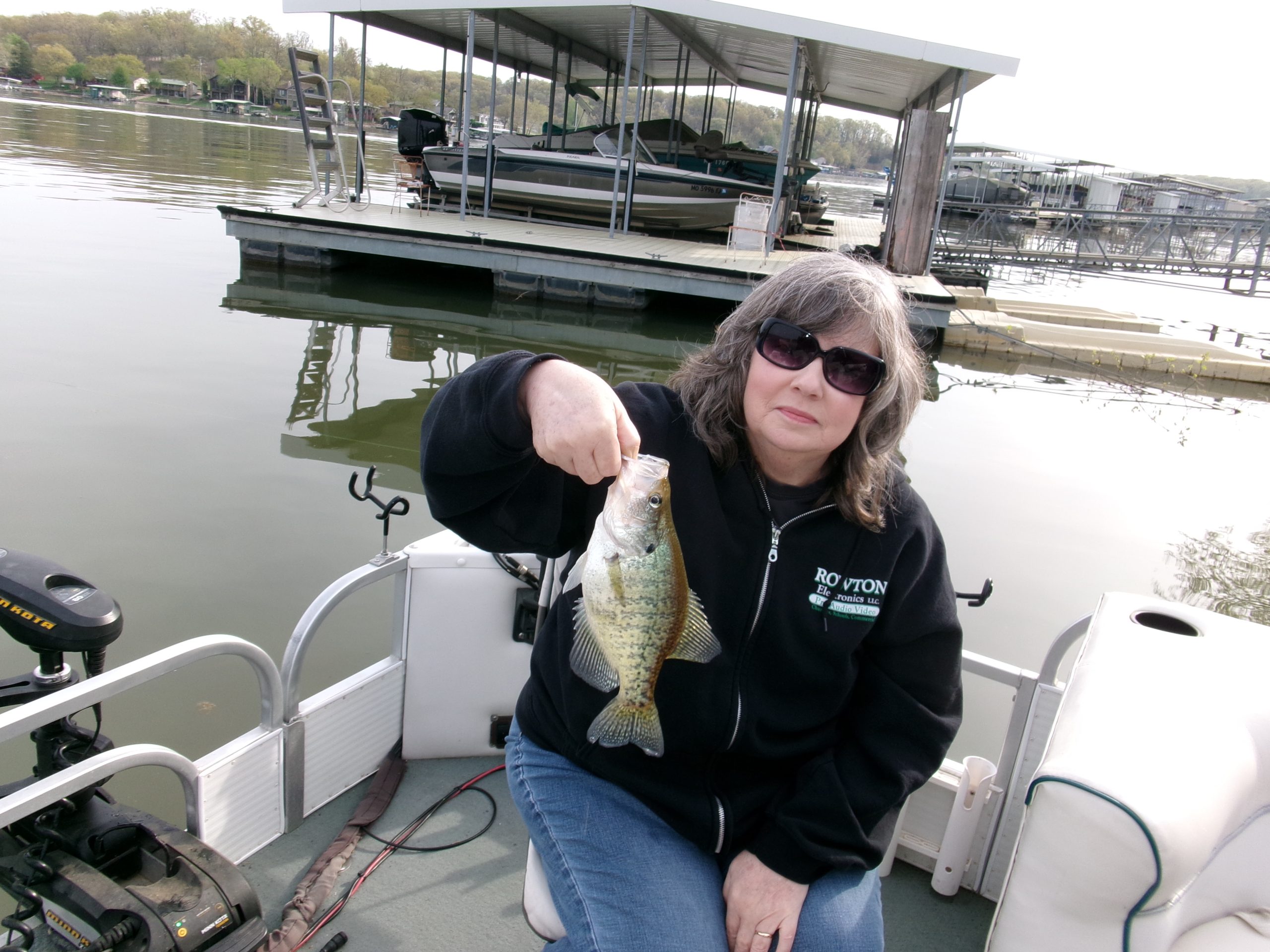
We fished out of the Osage Arm of the lake in the Gravois Creek area. Water temperatures ranged from 62 to 66 degrees. These are ideal temperatures for pre-spawn crappies and white bass to move into shallow spawning areas. The channel catfish and largemouth buck bass had moved into shallow water, too. Capt. Barber and his daughters were all gracious and very helpful during our trip. I am a service-connected disabled veteran with hip and knee issues from military service, and the Barbers made our trip easy and safe, even for this old paratrooper and his cane!
Lake of the Ozarks offers great fishing opportunities for white crappies, black crappies, white bass, largemouth bass, bluegills, shellcrackers and a variety of catfish. The lake offers excellent fishing opportunities all season long. It had recently been stocked with Florida-strain largemouth bass and a recent tournament yielded several behemoth bass over 8 pounds! The crappies were of good size, and there were huge schools of baitfish in the areas where we fished.
Crappies were our main target species, with white bass our secondary target fish. March and April are prime months to fish for crappies and white bass; however, Capt. Chris informed us that these fish can be caught throughout the season using a variety of fishing methods and techniques. If you want to catch bluegills and shell crackers, May and June are good months.
Are you enjoying this post?
You can be among the first to get the latest info on where to go, what to use and how to use it!
Capt. Chris put us on a variety of locations throughout the two days of fishing: spawning flats, boat docks, brush piles, rocky banks, and wood cover. We caught fish in all these locations. The fish appeared to be scattered, but brush piles and boat docks seemed to be the most productive locations where we caught fish during our trip.
We used a variety of techniques to catch fish. We started with spinning rods, slip floats, split shot for weight and a hook with live bait. Live bait often entices fish to bite, even after a weather front has passed through the area. We also cast 1/8- and 1/16-ounce ball-head jigs with grubs attached.
Colors can be critical when fishing for crappie and Capt. Chris had a good variety of jigheads and trailers in a variety of colors. We tried a variety, but a jig with a pink head and Bobby Garland’s “monkey milk” colored trailer seemed to attract the most fish. We also caught crappies, white bass and channel catfish on trailers with blue/black bodies with either a clear or chartreuse tail, rigged on a chartreuse jighead. Kathy also caught a small largemouth bass while using a live bait rig.
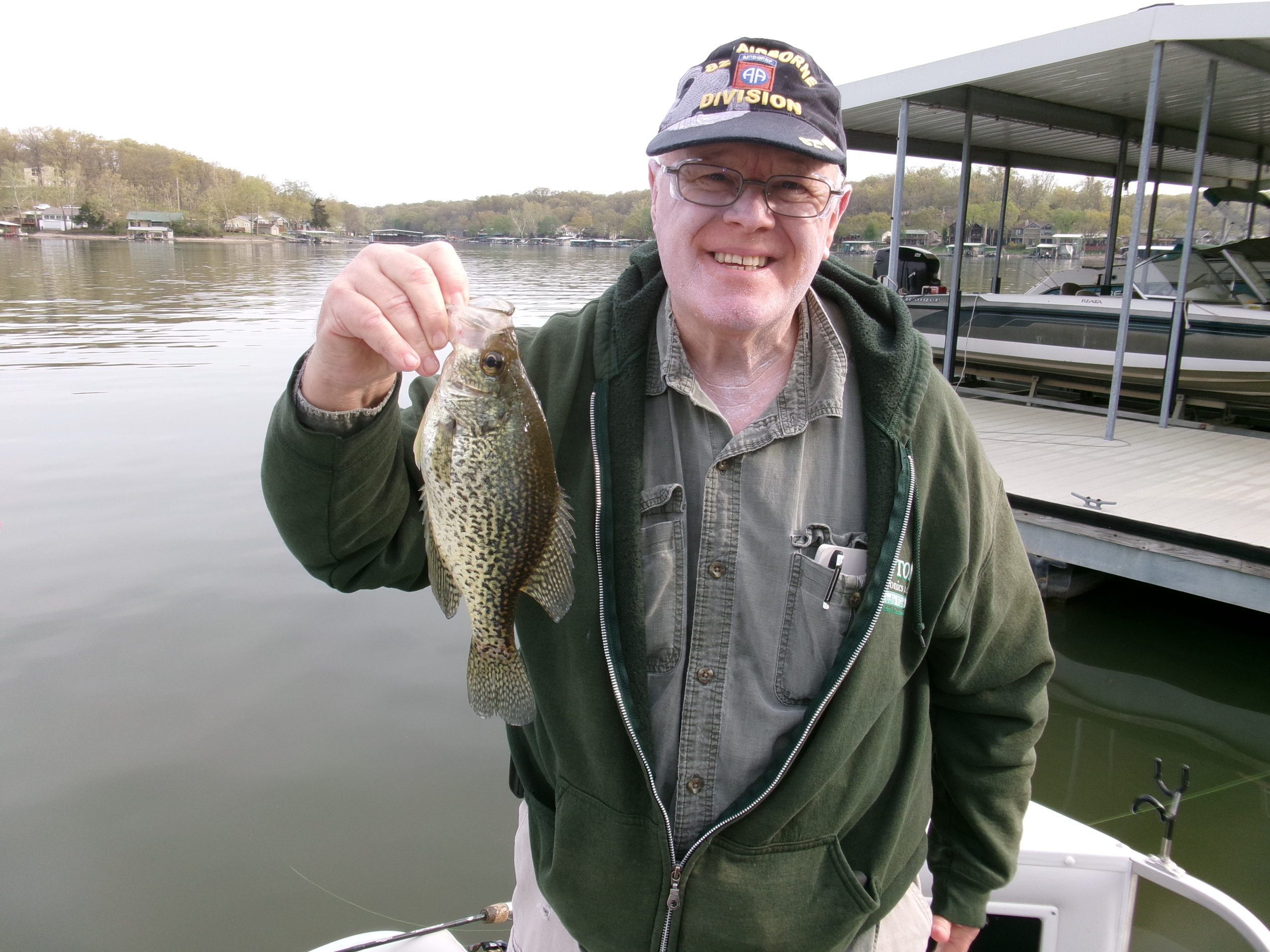
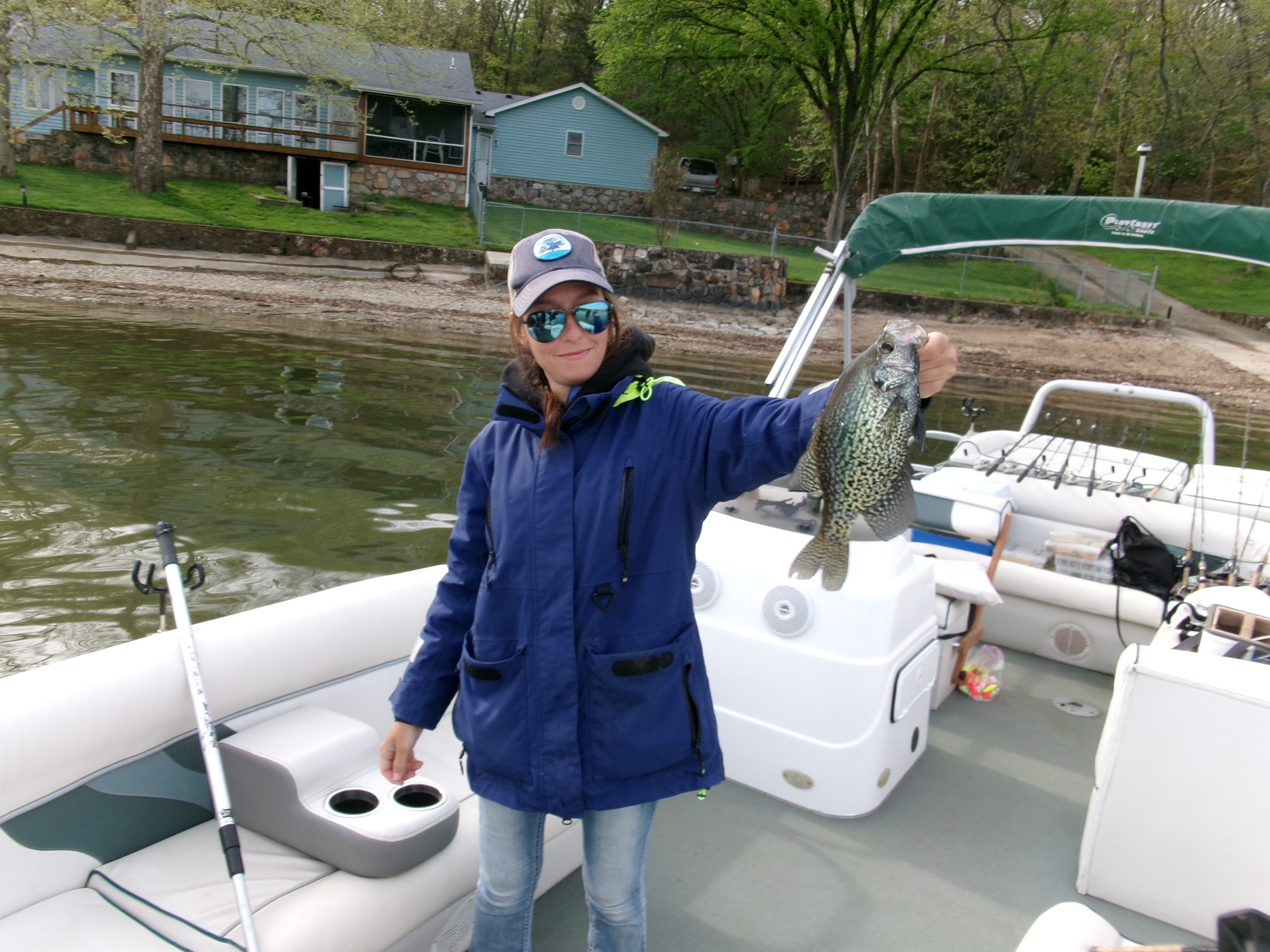
Later, we tried trolling Berkley Flicker Shad crankbaits with a lot of chrome and “flash” on long rod (11 feet) and short rod (6 feet), but with no hits. We ended up going back to casting jigs and live bait rigs to brush piles and boat docks, using 5 1/2-foot spinning rods and reels equipped with 4-pound test monofilament line. We started with slip float live bait rigs set at a variety of depths, depending on the depth of water and where the fish locator showed us where fish were suspended. Note: Crappies and many other fish will rise up to take a bait but won’t necessarily go down to it. When a weather front hits an area, you must put the bait in front of their noses to entice a strike… even using jigs. When we got the bait in the fish’s faces, we would get strikes.
Capt. Chris’s boat was equipped with side- and forward-looking sonar, front and back. This equipment allowed us to locate fish and cover and put baits and lures in front of the fish. The technology available today is great for locating fish, but it does not make them bite when they are inactive or have lockjaw!
Lake of the Ozarks offers great fishing opportunities. Fishing with a good guide will help you be more successful on your trip. I highly recommend Capt. Chris Barber and Barber Fishing Guide Service at www.Barberfishingguideservice.com, (314) 583-8174. You can also email at Barberc695@gmail.com. Capt. Barber and his daughters Addie and Rachel are all Coast Guard Licensed Guides and are well qualified to make your fishing trip a success. They provide all the tackle, bait and lures that you need for a successful day of fishing.
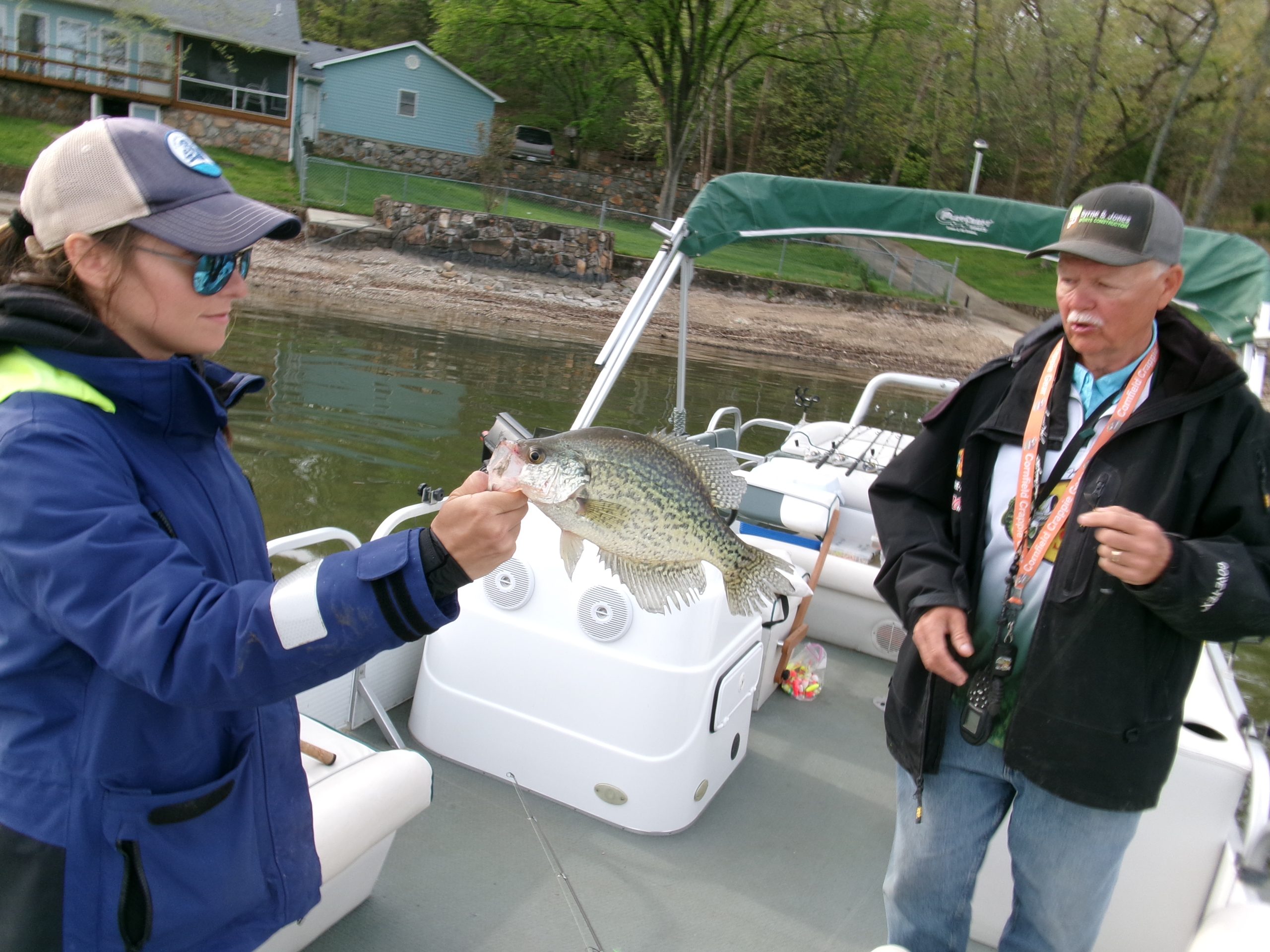
MWO
SHARE THIS POST
Did you enjoy this post?
You can be among the first to get the latest info on where to go, what to use and how to use it!
